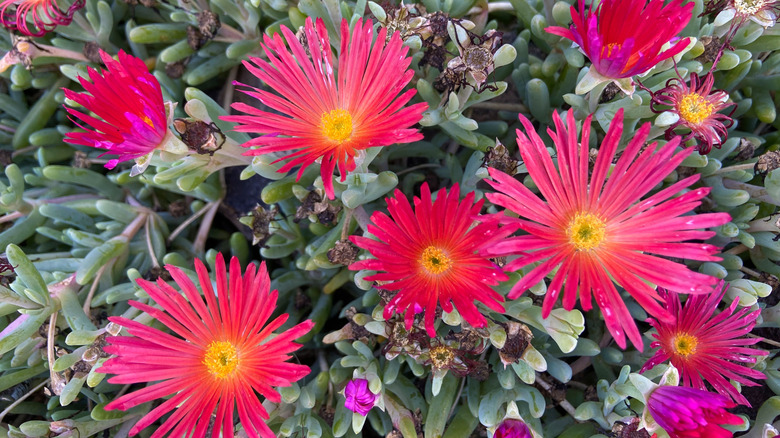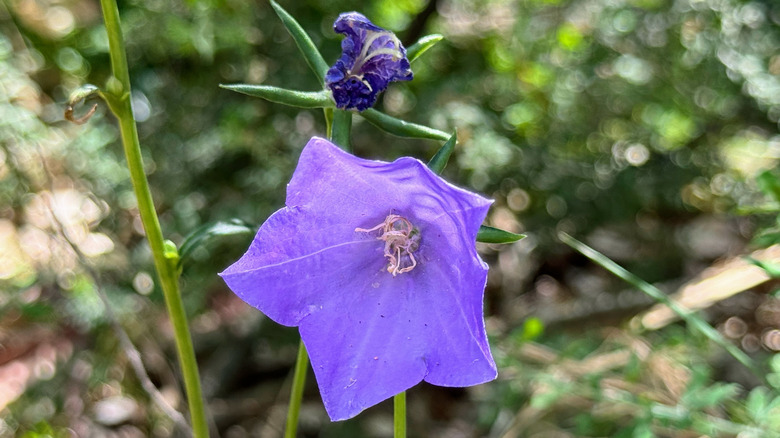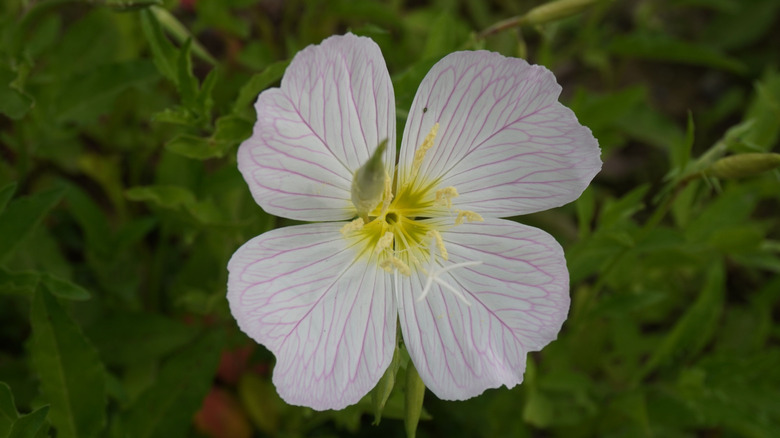Stunning Companion Plants That Pair Beautifully With Ice Plant Ground Cover
With its dainty flowers in bright hues of pink, red, orange, purple, lavender, yellow, or white and lush greenery, the trailing ice plant (Delosperma) is one ground cover you should plant in late summer for beautiful fall color. This drought-tolerant plant derives its name from its pointed, conical succulent leaves that resemble ice crystals, not to be confused with the similarly named invasive iceplant (Carpobrutus edulis). While attractive standing alone as a ground cover, companion plants that can complement it beneath your shrubs and trees are the carpathian harebell (Campanula carpatica) and white evening primrose (Oenothera speciosa).
The slightly taller-growing carpathian harebell is a clumping plant that produces different colors depending on the variety. And, the evening primrose is a blooming perennial that can climb and trail. These companions thrive in similar conditions to the ice plant, which grows best in USDA Hardiness Zones 5 through 9, is a perennial in most regions, and likes full sun and well-draining soil.
Carpathian harebell
The carpathian harebell plant is also known as carpathian bellflower with cultivars like 'Blue Clips' and 'White Clips.' Carpathian harebell can take as many forms as it can colors. Originally found in southeastern Europe, the flowering plant is a perennial, hardy in zones 4 through 9. Like the ice plant, it prefers full sun but can also tolerate partial shade, making it a perfect companion plant for areas that are slightly too dark and cool for the ice plant.
Carpathian harebell grows in clumps of approximately 1 foot wide and between 6 and 8 inches in height — it can provide some visual height diversity when paired with the low-growing ice plant. Its blue, purple, or white flowers nicely complement the ice plant's range of colorful blooms. Both the ice plant and carpathian harebell will beautify your garden with blooms all summer long, with carpathian harebell ceasing to bloom around September and the ice plant's flowers dying off at first frost.
Evening primrose
Evening primrose blooms during a similar time period as the ice plant and carpathian harebell — June through September. An underrated perennial that'll effortlessly transform patchy garden areas, its fragrant flowers can be pink or white and grow to be about 3 inches across, opening in the evening and closing come sunrise, hence the name. Like the ice plant, evening primrose also does well in full sun and well-draining soil. And, just like the carpathian harebell, it is hardy in zones 4 through 9.
Its seeds are light and come off easily with a slight breeze, making it easy for the plant to spread. Due to the sprawling nature of evening primrose — its rhizomes can reach at least 18 inches — gardeners may want to keep an eye on how far the plant grows, as there is a slight risk of it crowding out nearby plants with less-established root systems.


